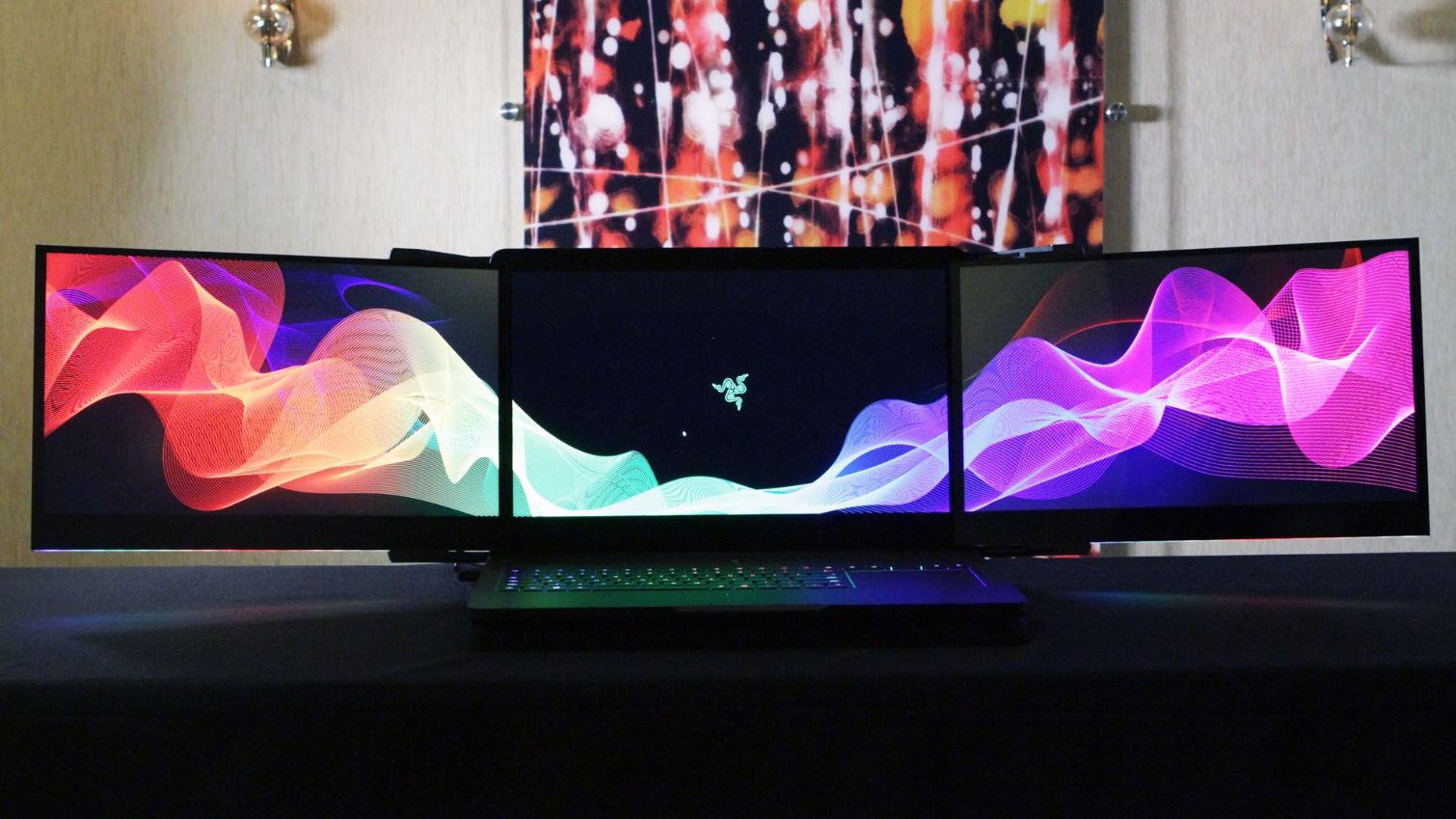Three Displays, One Laptop? Razer’s Project Valerie Shows Promise, Problems
Stop me if you’ve heard this before: 1) Razer has a humdinger of a CES announcement, 2) it’s named after a lady, and 3) it seems perilously like vaporware. This time, it’s a triple-display laptop concept called Project Valerie.
The Premise
Yep, three displays, one laptop. When you open the laptop, you can fold out two more displays like wings. Each display is a 17.3-inch (4K) IGZO panel with G-Sync, so altogether you get a whopping 12K resolution that wraps around you to about 180 degrees.
The secondary and tertiary displays extend automatically due to an “automated deployment system.” A Razer press release reads, “Each display mechanically slides out of the side of the main screen and adjusts into place, making it easy for users to deploy.“ Note that by default, when you open the lid you see just the one display; if you want all three, you simply pull the other two out from their hiding place behind the main display.
Razer said that it relies on software to automatically scale the PC’s display across all three monitors. A representative told Tom’s Hardware that it works similarly to when you connect an external display to your laptop and it autoscales. The three displays are connected internally.
The system powering this three-headed beast is essentially a 17-inch Razer Blade Pro. It’s not really a Razer Blade Pro with two extra panels slapped on top of it, but it sounds like it may as well be. Project Valerie looks just like one, with the same type of unibody CNC aluminum chassis and a cooling system that involves “a custom-designed fan and dynamic heat exchangers” that “pair with a vapor chamber to maximize heat dissipation.”
It also has an Nvidia GTX 1080 inside--at least for now. The specs are by no means finalized, so the shipping version of Project Valerie will have whatever the hottest Nvidia GPU is at that time. (“That time” has no particular date, yet.)
It’s outfitted with Razer’s Ultra-Low-Profile Mechanical keyboard switches. There’s a strip of LED lighting under all the displays and, unsurprisingly, it all works with Razer’s Chroma lighting software.
Get Tom's Hardware's best news and in-depth reviews, straight to your inbox.
The whole kit is about the size of two Razer Blade Pros stacked on top of each other.
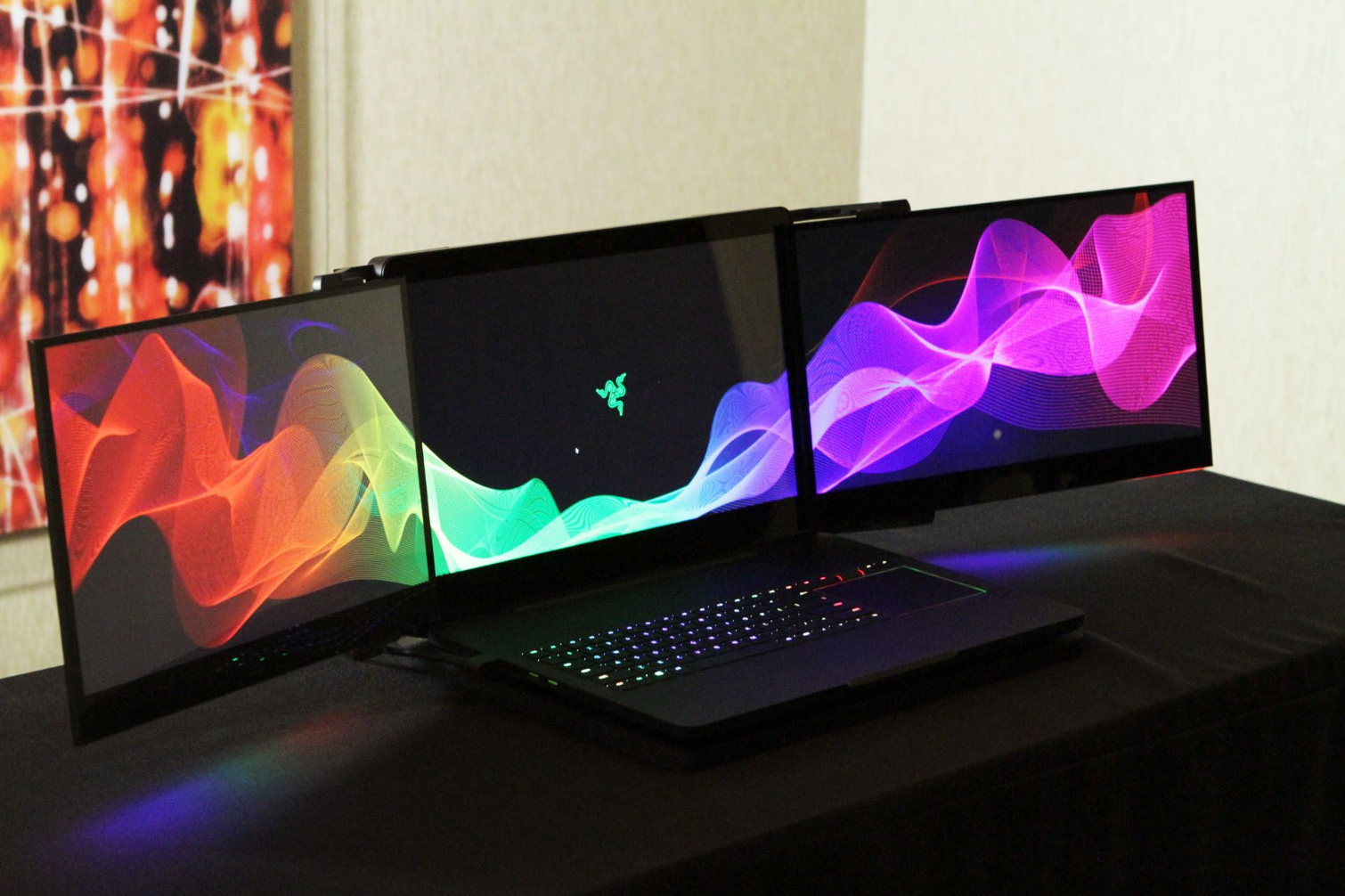
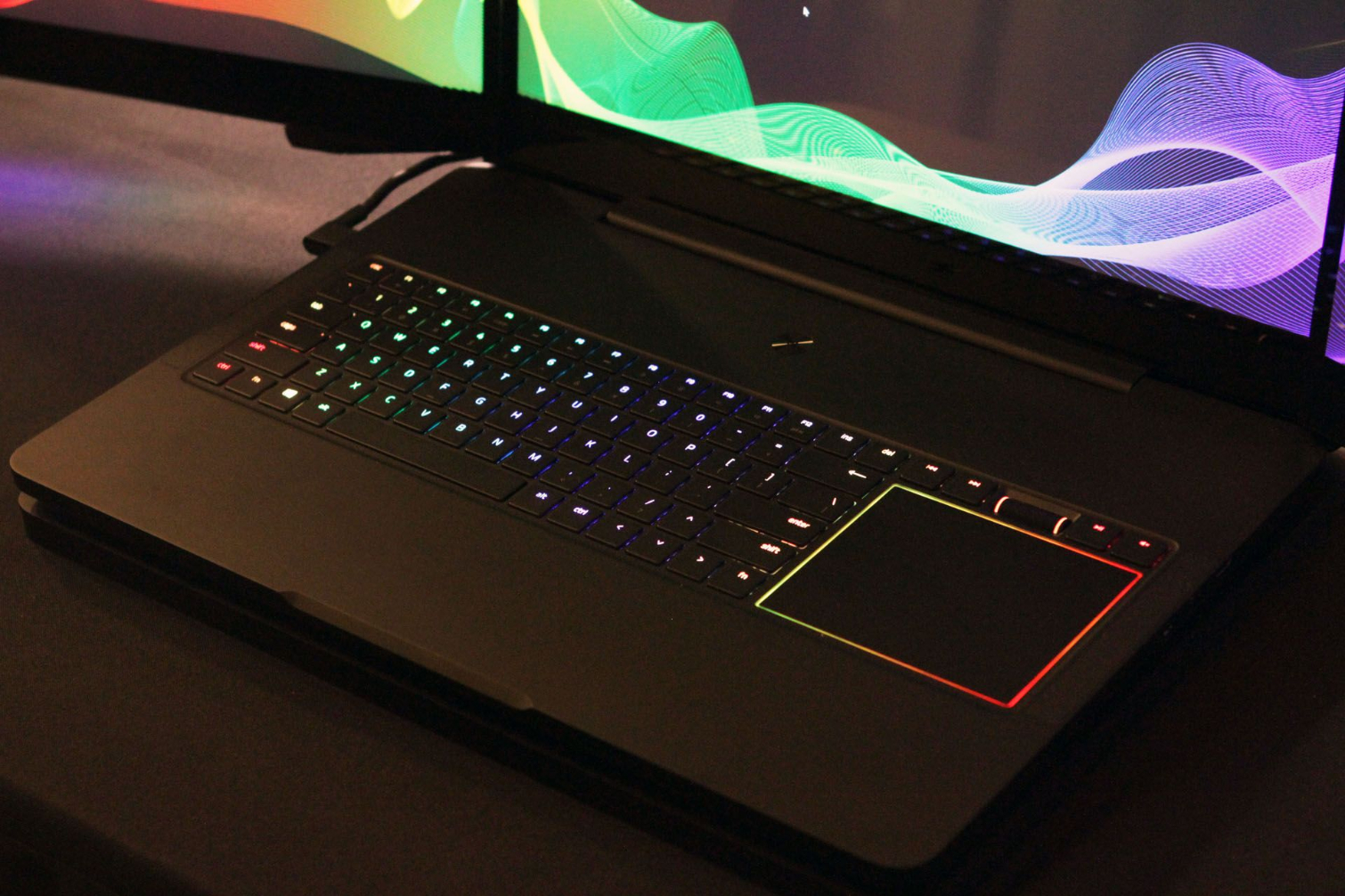
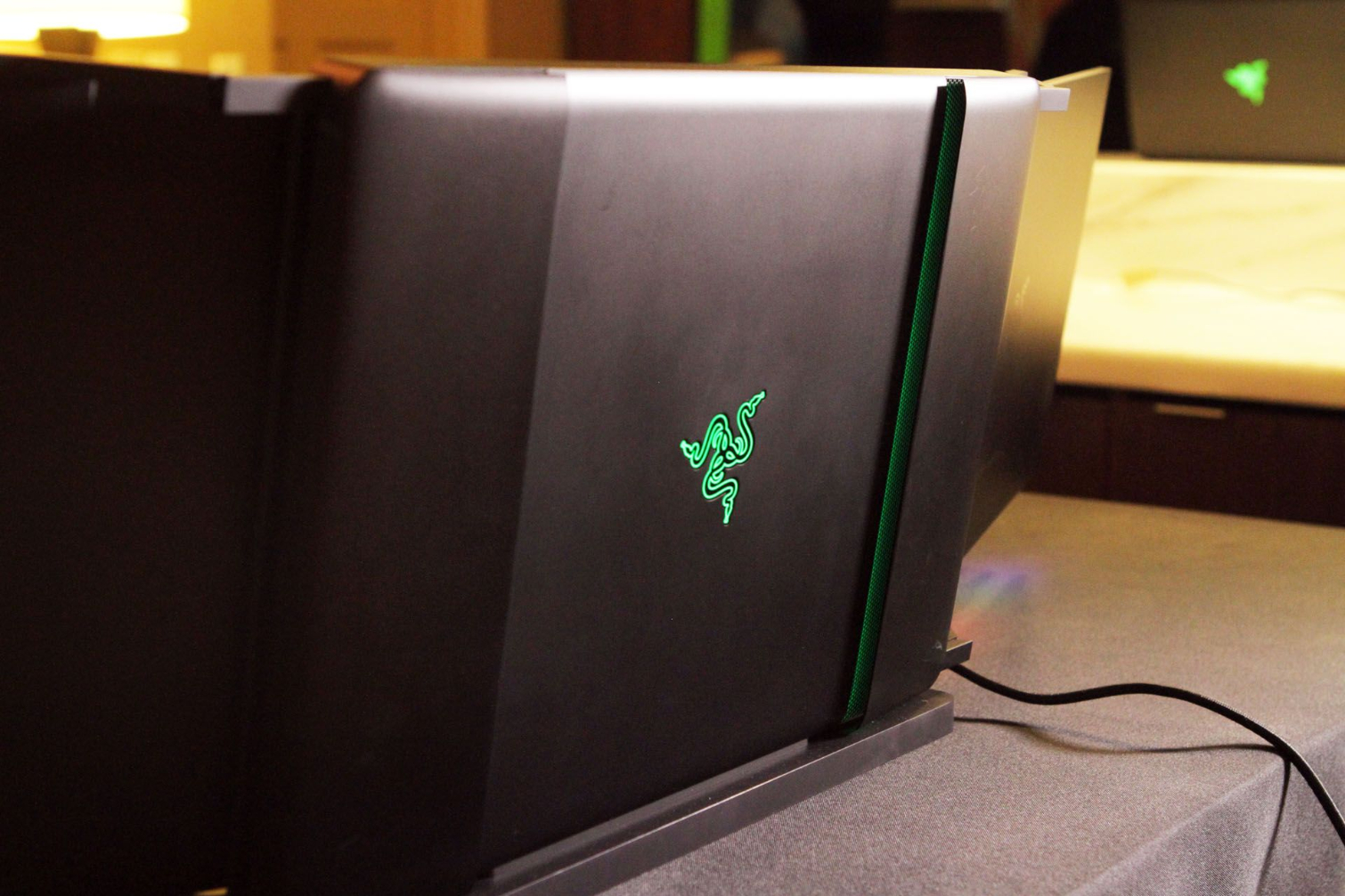
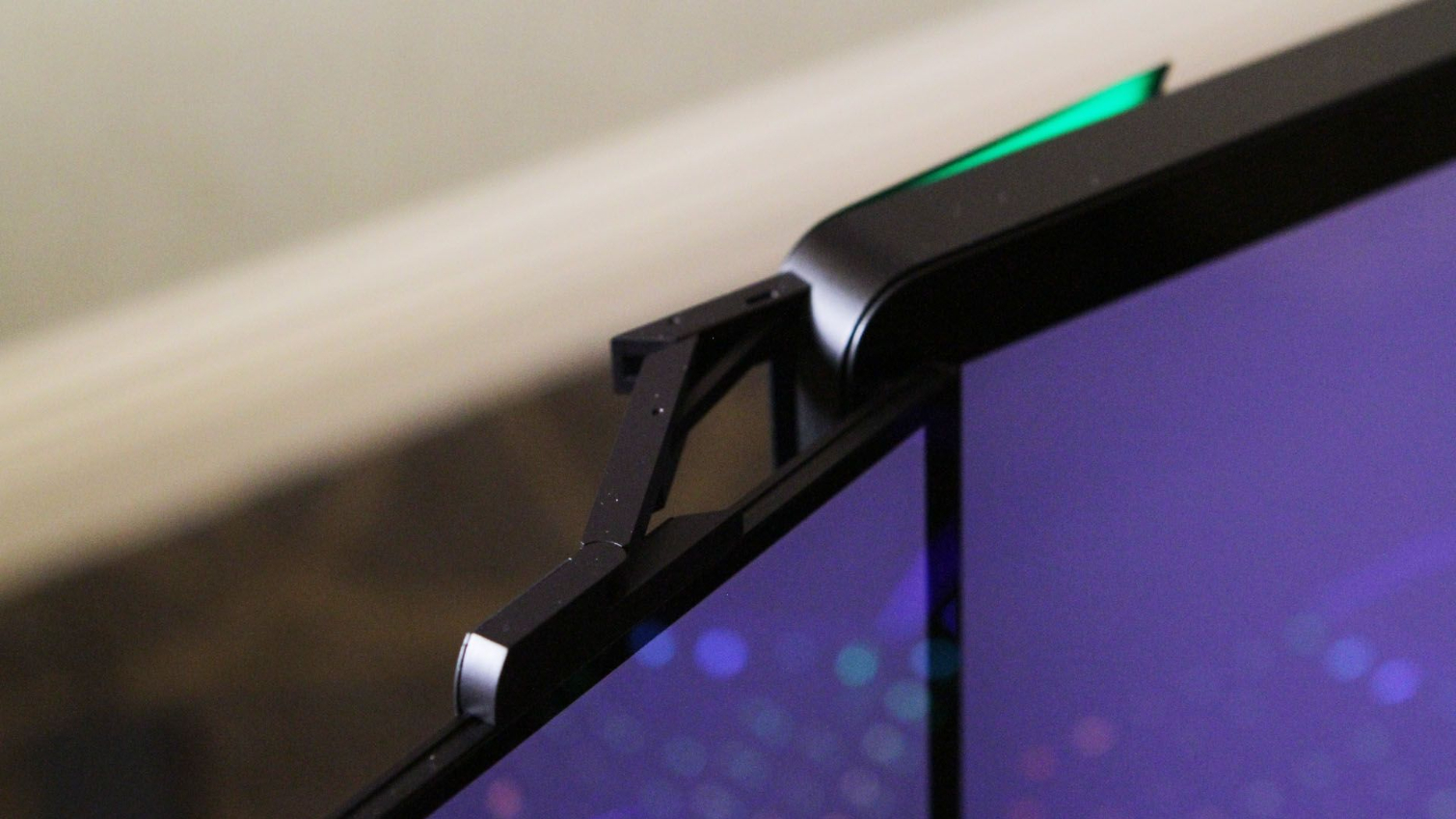

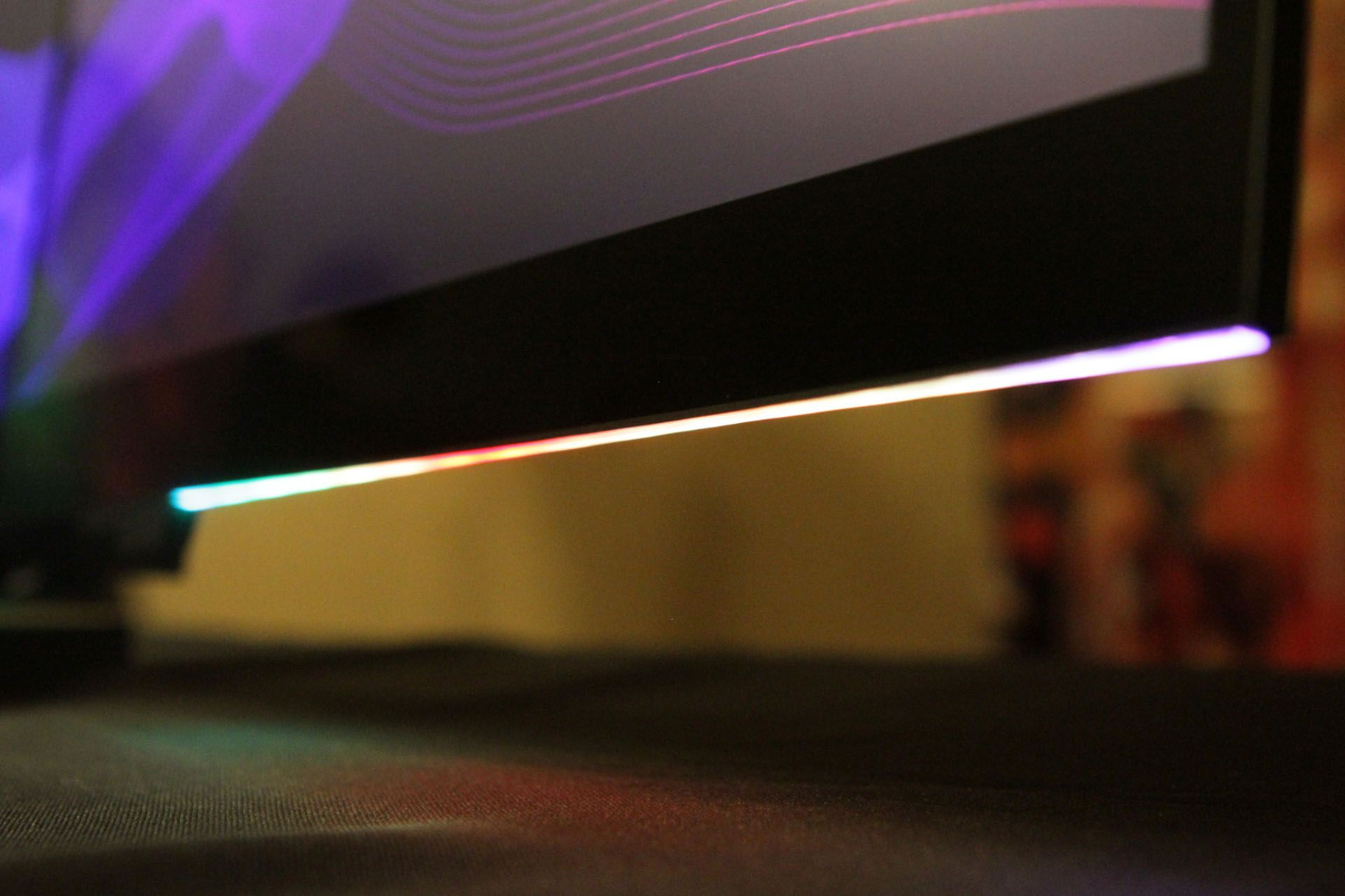
The Prototype!
Quite frankly, going into our meeting with Razer at CES, we doubted that the company would have a working model for us to paw, and indeed, the first sight that greeted us was a non-working mockup. However, in another part of the room, lo and behold, there was a working prototype. The three-display system on the prototype, we should note, did not have the final fancy hinges. In fact, instead of the two flanking panels opening at an angle like the mockup, both were flush with the main display.
Razer let us run through a game demo on the prototype. It was running at 4K at 60Hz, at Ultra settings. The game, perhaps surprisingly, was as smooth as can be. Predictably, though, heat was a major issue. As soon as we started playing, the fans kicked on at full blast. They were downright loud, and after a few minutes under our fingers, the system was downright hot.
To be fair, this was after all prototype, but Razer is going to have to figure out a better cooling solution for the final product.
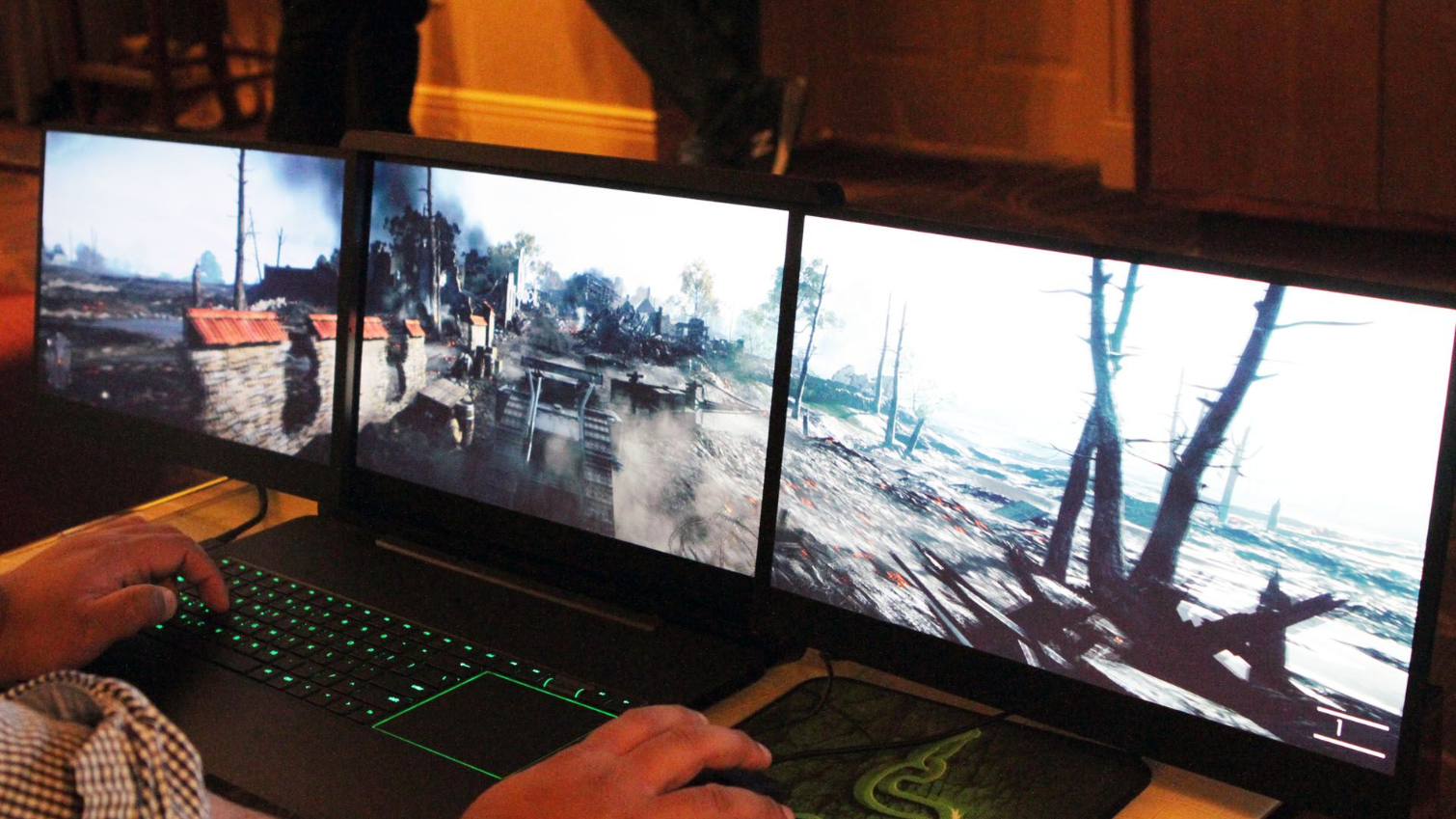
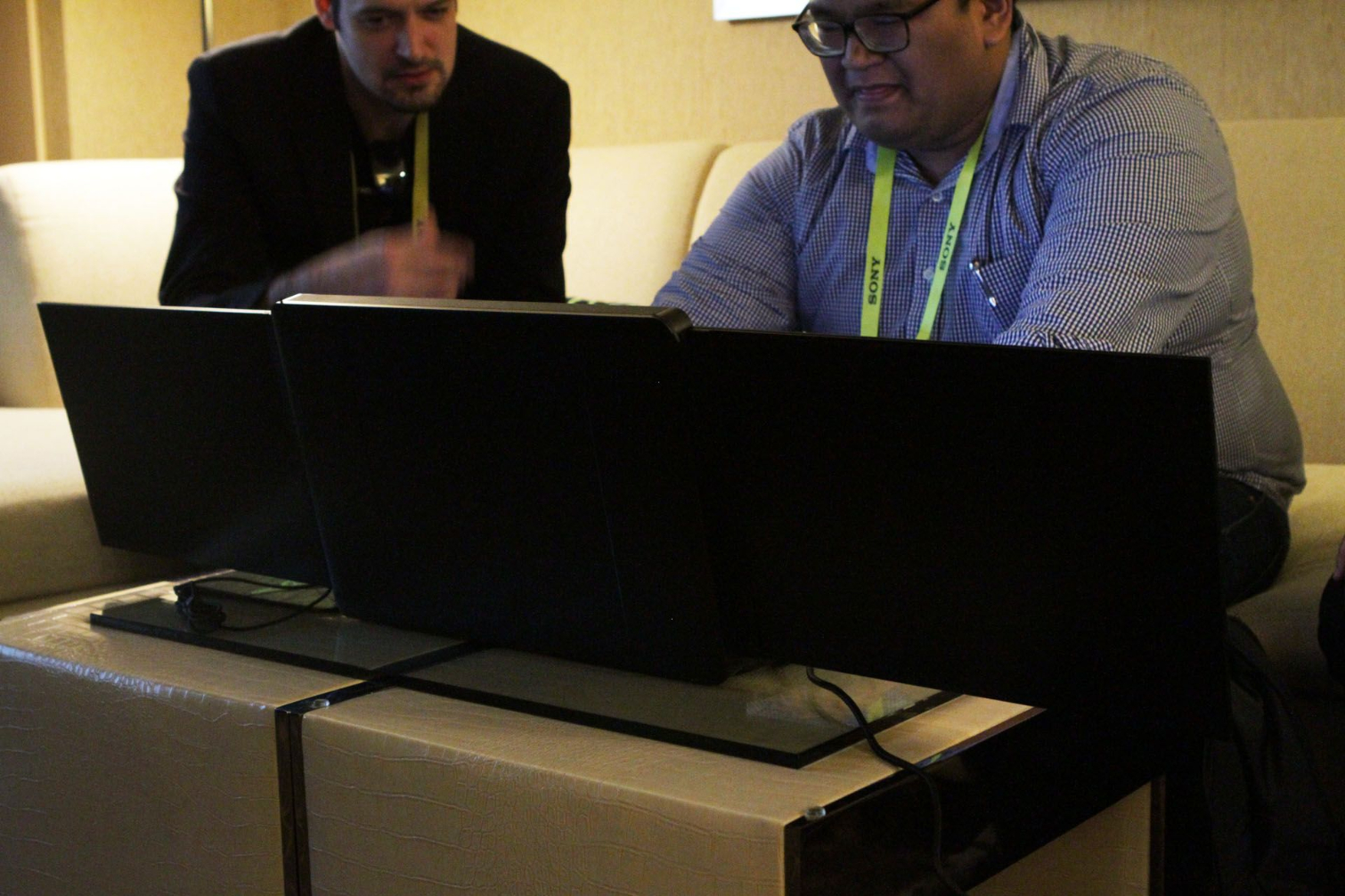
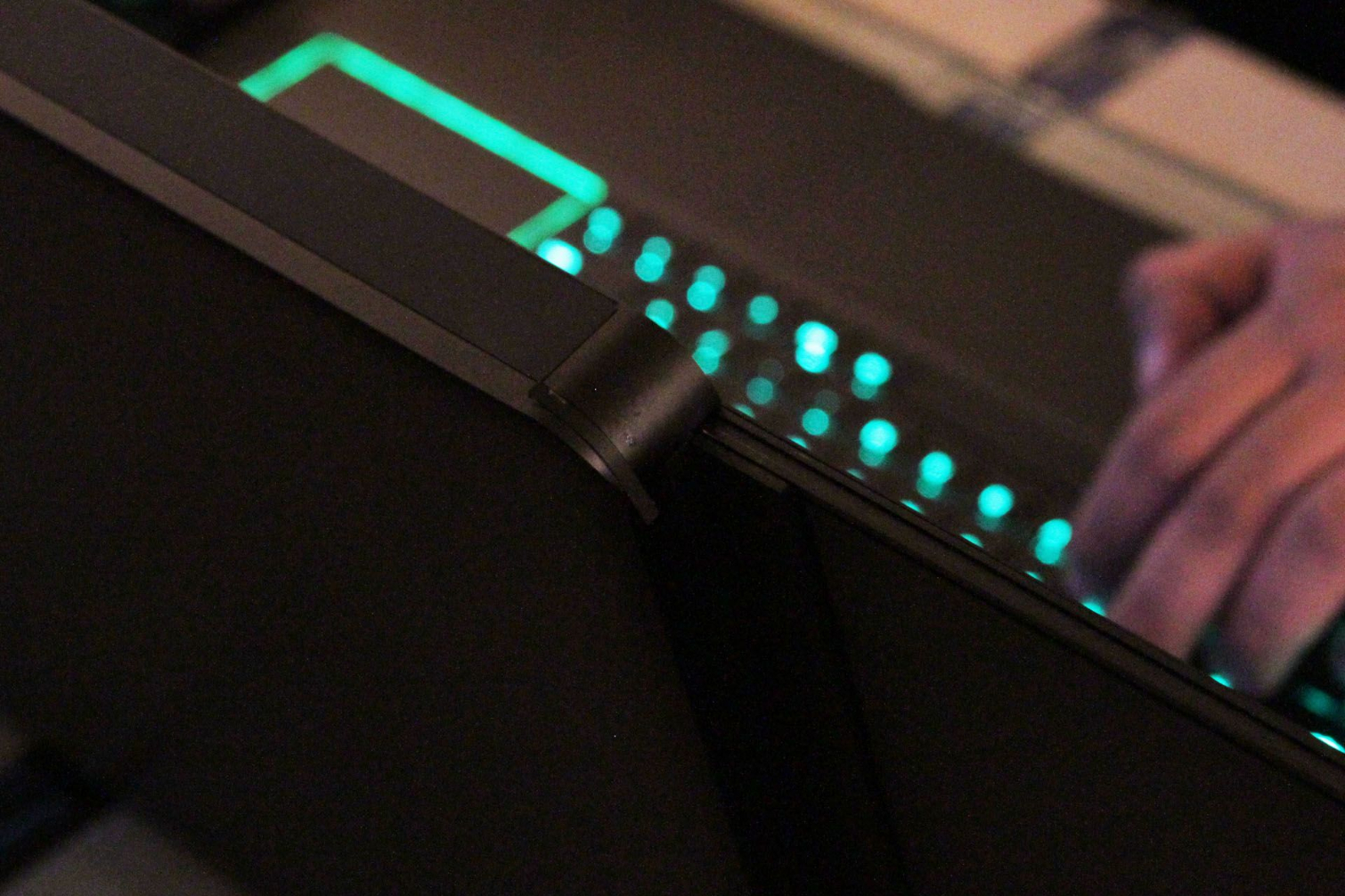
The Problems
It is true that Razer’s annual CES splash is often a real product that you can buy--for every Project Christine (oh, we hardly knew ye) there’s a Razer Blade Stealth-plus-external GPU dock concoction. (Ironically, the R&D that went into Project Christine resulted in the Razer Core.)
Project Christine was a nifty modular PC concept that had too many issues to ever become a real product. Project Valerie offers a solution for everyone who’s ever pined for more laptop screen real estate, but it doesn’t seem that the Razer team has nailed down the pesky key details.
Goodness knows how much the thing weighs. Although Razer had both a working prototype and a prettier mocked-up version, we were not permitted to lift or move either. It’s possible that even with two extra monitors, Project Valerie will end up weighing the same as those beastly 7-10 pound gaming laptops that were so prevalent not too long ago, which we suppose is forgivable--you know, because of the two extra monitors and all.
We’re also concerned about the simple problem of balance. Laptop makers, including Razer, have gotten quite good at creating laptop hinges that open easily with one hand yet keep the display firmly set at whatever angle you need it to be and avoid being top heavy. That’s taken a great deal of R&D. What happens what you add two more displays on top of that? Surely, Project Valerie will fall backwards immediately with all three displays spread wide.
Both the working prototype and the mockup we saw appeared stable, and the former didn’t seem to have any trouble when we sat down to play a game on it. We did notice, though, that both were carefully perched on hard, flat pads. It appeared that the back of the primary display folded open such that it was resting on the pad; in other words, the display isn’t relying on just the hinge for support. However, again, we weren’t permitted to fiddle with opening or closing the lids, so we can’t speak further on that subject. Razer admitted that it’s still working on the balance issue.
In a briefing, we asked about this issue, and the answer we got--that it’s still in the concept phase--means that they haven’t figured that part out yet. Sure, you could solve the balance issue with a kickstand on each of the two flanking displays, but when the system is folded up, where are those stored?
Further, even if instead of 12K immersive 180-degree gaming, you just want a killer productivity powerhouse, that’s a lot of pixels to push on a single GTX 1080. A possible solution would be to pair Project Valerie with the Razer Core external GPU dock, but Razer told us that the Core is not validated to work with Project Valerie at this time (but it might be in the future).
And what of battery life? Razer is still working that one out, but representatives did say that Project Valerie has the same battery as the Razer Blade Pro. That laptop is rated for about four hours of life, so take that and add two 4K displays to it and do your own speculative math.
This is to say nothing of the potential price tag. Razer was mum on the subject, but consider that a 17-inch Razer Blade Pro with a GTX 1080 already costs at least $3,700. Add two 4K panels to that, add in the cost of the deployment mechanisms, and sell your car to afford it.
(We also feel that Razer missed a golden opportunity to name this “Project Valkyrie” instead of “Project Valerie.” The thing has wings, for crying out loud. But that’s neither here nor there.)
Suffice it to say, Razer has a number of issues to sort out with Project Valerie.
The Promise
And yet...and yet. Having three displays on a laptop would be, in a word, cool. On your desk at home, it would be a killer setup, of course, but anyone who has worked on the road using just that one smallish laptop screen knows what a huge boon it would be to have such a workstation. That’s not to mention the mic-dropping cache of waltzing into a LAN party with such a beast under your arm.
Surely there’s a way to pull off triple displays without the ignominy of a bulky, heavy, unbalanced, overheating system. Perhaps the two extra panels could be panes of glass that rely on projection systems (not unlike a fancy HUD), which would reduce both the weight of the device and the graphical demands on the system. Perhaps two panels instead of three is more feasible. And so on.
It’s possible that some of the issues Razer has to fix with Project Valerie will be fatal, but representatives we met with seemed set on the idea that it’s going to become a real, shipping product. And so we wait for a three-screened triumph of engineering.
Seth Colaner previously served as News Director at Tom's Hardware. He covered technology news, focusing on keyboards, virtual reality, and wearables.
-
dstarr3 Definitely neat, but it's very much a solution in need of a problem. There's no GPU(s), especially mobile ones, that can game on three 4K monitors. If you're reliant on an external GPU dock, then you're greatly limiting the portability already anyway and should just save money and buy some external displays. If this was for productivity instead of gaming, this is a totally viable thing and I could see people really wanting/using this. But no one looking for a mobile productivity/workstation laptop is going to buy something that looks as gaudy and "gamer-y" as a Razer anyway.Reply
So, neat proof of concept. But that's about all. -
hoofhearted Why not R&D a way to make the two extra displays detachable? Hell, make the core capable of quad sli and then purchase extra displays as needed.Reply -
RomeoReject Having all three be 4K seems absolutely silly. I could've understood making the middle 4K, and the two sides 1440p. Assuming the GPU doesn't have to run the outside displays when they're not "deployed", that'd be manageable. Would've also helped trim costs and improve battery life.Reply
As for balance, a little stand that flips out below could help, as no one is going to put out the out displays while on the go, so if it can be stabilized on a desk, that's all that matters. -
ledhead11 A pretty cool concept. A bazillion problems, but still pretty cool. As someone who owns 2 GTX1080's I can tell you that 3 4k displays is a bit much in terms of gaming even w/ g-sync. 3 x 1440p's would've been much more efficient. I even read a review at OCD over the summer with a similar desktop and 3 g-sync 1440ps that totally rocked.Reply
The 'portable desktop' phenomenon still seems to be getting thought of though. For portable workstation that could be pretty neat. -
wifiburger looks like a freakshow ! this will get cut in house before it ever complete assembly line !Reply -
thundervore This is old, i could I sworn I saw this on youtube over a year ago as some stupid name like SlideNJoy. Did Razer buy the company or patent for this or something?Reply -
danvelopment I think it's time we start talking in MP when discussing displays with 8K around the corner.Reply
8K becoming 33MP, 4K being 8MP, 1080P being 2MP etc.
At 1MP maybe that'll finally put the nail in the coffin of 1366x768 laptops. 720p doesn't sound like it's half the resolution of 1080p.
Saying 12K for this is a bit silly, and implies a higher resolution than 8K. And if it's allowed to be used interchangeably with normalised aspect ratios then it should be binned entirely.
Maybe they could make one with two half size displays that open and close like double doors. -
danvelopment Or at least return to using vertical resolution, as this would be still be 2160p, and apparently no different to 2160p of 4k.Reply
